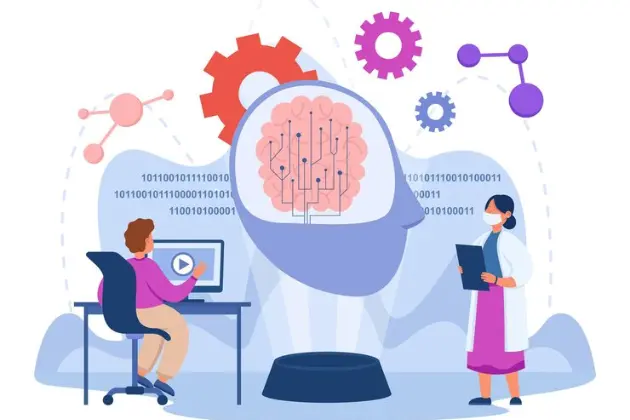Machine learning is changing the way we live and revolutionizing a lot of industries. There are two main approaches to machine learning: traditional machine learning and deep learning. They are both good and bad and are good for different things. This article provides an in-depth comparison of these two machine-learning approaches to help businesses and startups understand which technique works best for their needs.
A Brief History
Let’s first briefly trace the history of these two approaches.
The Evolution of Traditional Machine Learning
Research on machine learning originates in the late 1950s. Early on, machine learning concentrated on symbolic methods and statistical models like linear regression, support vector machines, Naive Bayes classifier, logistic regression, etc. Hand-made elements were created by researchers to teach models particular tasks. Later terms for this type of machine learning were conventional or classical machine learning.
Though useful, these classical models had limited powers. Creating hand-engineered features lacked scalability across jobs and demanded domain knowledge. Conventional ML models only could address limited, pre-defined issues.
The Advent of Deep Learning
In 2006, Geoffrey Hinton showed dramatically improved object recognition performance using a multilayer neural network trained in a novel way. This work revived interest in neural networks, which then saw rapid progress.
Deep learning is the reference to contemporary neural networks with several hidden layers. Deep learning models replace hand feature engineering by automatically learning feature representations required for detection or classification. Leading deep learning development firms like Artjoker assist businesses in using these potent technologies for practical purposes: https://artjoker.net/services/deep-learning-development-company/.
In 2012, Hinton and his colleagues developed a deep learning model called AlexNet that won the challenging ImageNet image classification competition by a huge margin over classical ML models. This established deep learning as a revolutionary approach for machine perception tasks.
Fundamental Differences
While both approaches can solve a wide variety of ML problems like classification, object detection, language translation etc., they fundamentally differ in the following aspects:
1. Feature Engineering
A major difference is deep learning algorithms perform automatic feature extraction, while traditional machine learning relies on manual feature engineering.
Deep learning models automatically identify and extract the most useful patterns from raw data to perform the task. For example, a convolutional neural network trained on images learns low-level edges, shapes, and texture patterns in initial layers. Further layers combine them into high-level features like face shapes to perform recognition.
In contrast, traditional ML models need humans to manually engineer input features based on their understanding of the problem. For example, for fraud detection, a data scientist extracts features like age, transaction amount, past suspensions etc., as inputs. Feature engineering requires domain expertise.
2. Data Dependency
Traditional ML models often work with small, clean datasets and do not always improve significantly with more data. In contrast, deep learning models are extremely data-hungry, and their performance improves as dataset size increases.
Today, deep learning models’ image and speech recognition capabilities are mainly fueled by the availability of large annotated datasets like ImageNet, MS-COCO, etc., and the growth of big data and computing capabilities.
Deep learning really shines when you feed more data to the algorithms. That said, traditional ML works better when less (but clean) data is available.
3. Interpretability
Another major difference is that traditional machine learning models are interpretable, while deep neural networks are largely black boxes.
For example, a decision tree model splits the data based on if-then-else rules at each node. Humans can understand and interpret such clear decision boundaries. In contrast, parameters in a deep neural network are not intuitive or easily explainable.
While research in interpretable AI and model explanations aims to open the black box, traditional ML still scores better on interpretability and transparency. This explainability is crucial for several applications.
4. Hardware Dependence
Traditional machine-learning algorithms run efficiently on standard CPUs. Deep networks require specialized hardware, such as GPUs and TPUs, for model training and inference.
Deep learning relies on matrix multiplications and numerical computations, which are faster on GPUs than sequential operations on CPUs. Large deep nets cannot be trained without leveraging GPU acceleration.
Strengths and Limitations
Now that you have seen how these techniques differ let’s look at their relative strengths and weaknesses.
Traditional Machine Learning
Strengths:
- Works well with small, clean datasets.
- Interpretable and transparent decisions.
- Simpler models, faster training.
- Runs on standard hardware.
Limitations:
- Manual feature engineering is tedious.
- Limited performance, even with more data.
- Narrow focus, less flexible to changes.
Deep Learning
Strengths:
- Automatic feature learning.
- Continued growth with more data.
- State-of-the-art results on perception tasks.
- Reusable features across tasks.
- High tolerance to noisy data.
Limitations:
- Data hungry requires large datasets.
- Lacks interpretability.
- Computationally expensive.
- Rigid construction, difficult to alter.
- Vulnerable to hostile assaults.
As you can see, both strategies have some complementing advantages. Deep learning gives performance; traditional ML offers openness.
Real-world Applications
Now let us look at some real world applications of each approach after looking at their characteristics.
Traditional ML Applications
Many critical applications powered by traditional machine learning rely on explainability.
- Fraud detection. With the help of the correlation of features and decision rules, you can detect fraudulent transactions. Need to justify decisions.
- Medical diagnosis. Interpretable model like decision trees, logistic regression allows us to diagnose diseases based on lab tests and examinations.
- Spam detection. Find the best spam identification techniques using Bayes theorem on email data. Explanations required.
- Risk modeling. Use linear/logistic regression and segmentation trees to quantify different types of risks in banking and insurance. Justifications needed.
Deep Learning Applications
Thanks to its exceptional perceptual skills, deep learning powers current real-world artificial intelligence technologies.
- Computer vision. Image classification, object detection and segmentation using convolutional neural networks with applications in autonomous vehicles, healthcare etc.
- Natural Language Processing. Machine translation, text generation and question answering using recurrent and transformer networks.
- Speech recognition. Speech-to-text transcription using deep neural networks at human parity. Enables voice interfaces and assistants.
- Anomaly detection. Detect defects, fraud etc., using autoencoder-based deep learning models.
Deep learning shines in perception-related tasks with uncertainty, like pictures, voice and language, as you saw. Analytical jobs involving structured data benefit from traditional machine learning.
Should You Use Traditional ML or Deep Learning?
After weighing their pros and cons, here is guidance on when to use traditional ML vs deep learning:
When to adopt Traditional ML:
- Small, clean datasets are available.
- Need to understand the decision process.
- Cost and speed are critical.
- Data distributions remain stable.
- Constraints on hardware/infrastructure.
When to embrace Deep Learning:
- Require state-of-the-art performance.
- Large datasets are available.
- Features are hard to engineer manually.
- Assisted by AI expertise and infrastructure.
- Flexibility to keep improving with data.
The Future Outlook
In recent years, great progress has been made in making deep learning models more interpretable, faster to train, and more efficient to run. At the same time, traditional ML also continues to evolve with advances like automated feature learning.
We are likely to see the convergence of these approaches in the future. Some promising research directions include:
- Techniques to make deep neural networks more explainable.
- Hybrid deep learning and symbolic models.
- Automated machine learning for feature engineering.
- Deployment-focused efficiency improvements.
Deep learning and traditional ML have evolved over decades of research to reach today’s critical capabilities. Both approaches continue to co-evolve and borrow strengths from each other for the next generation of intelligent systems.
Conclusion
Traditional machine learning and deep learning have developed as complimentary approaches for artificial intelligence. For many analytical uses, openness and efficiency provided by traditional ML are absolutely vital. Deep learning offers state-of–the-art performance on contemporary perception problems by learning from big datasets. These methods will probably converge going ahead; deep learning will become more interpretable while classical ML will incorporate automated feature learning.









